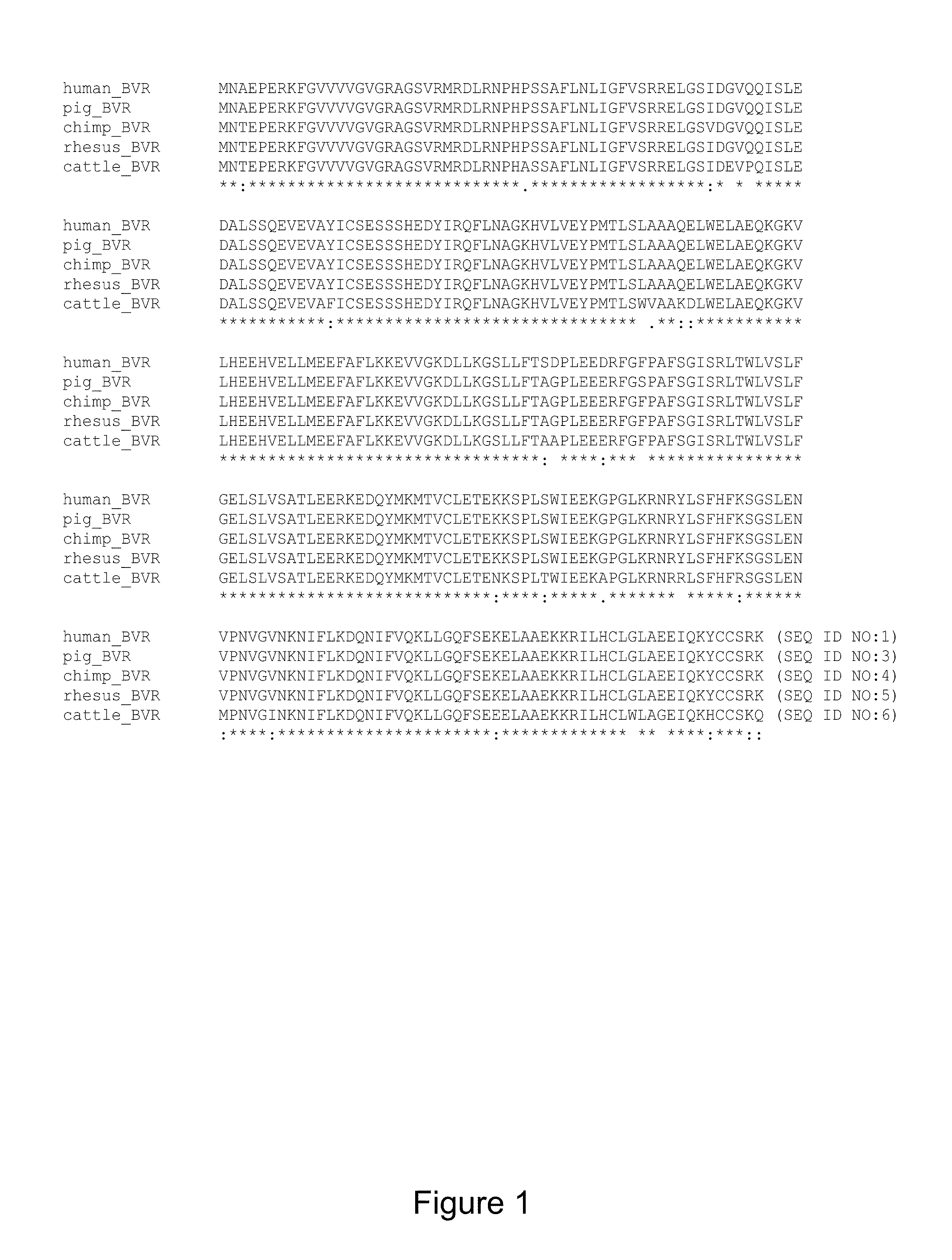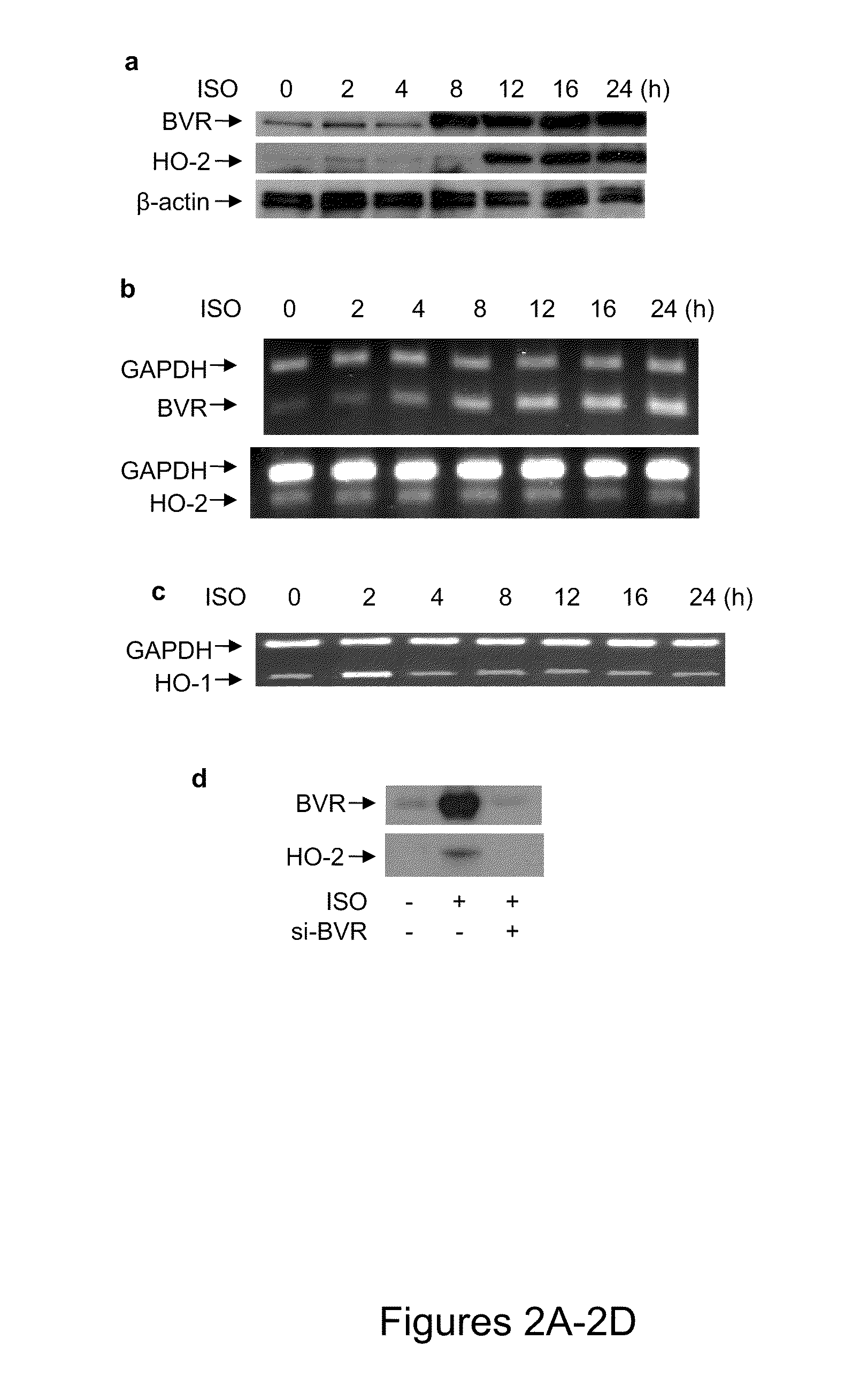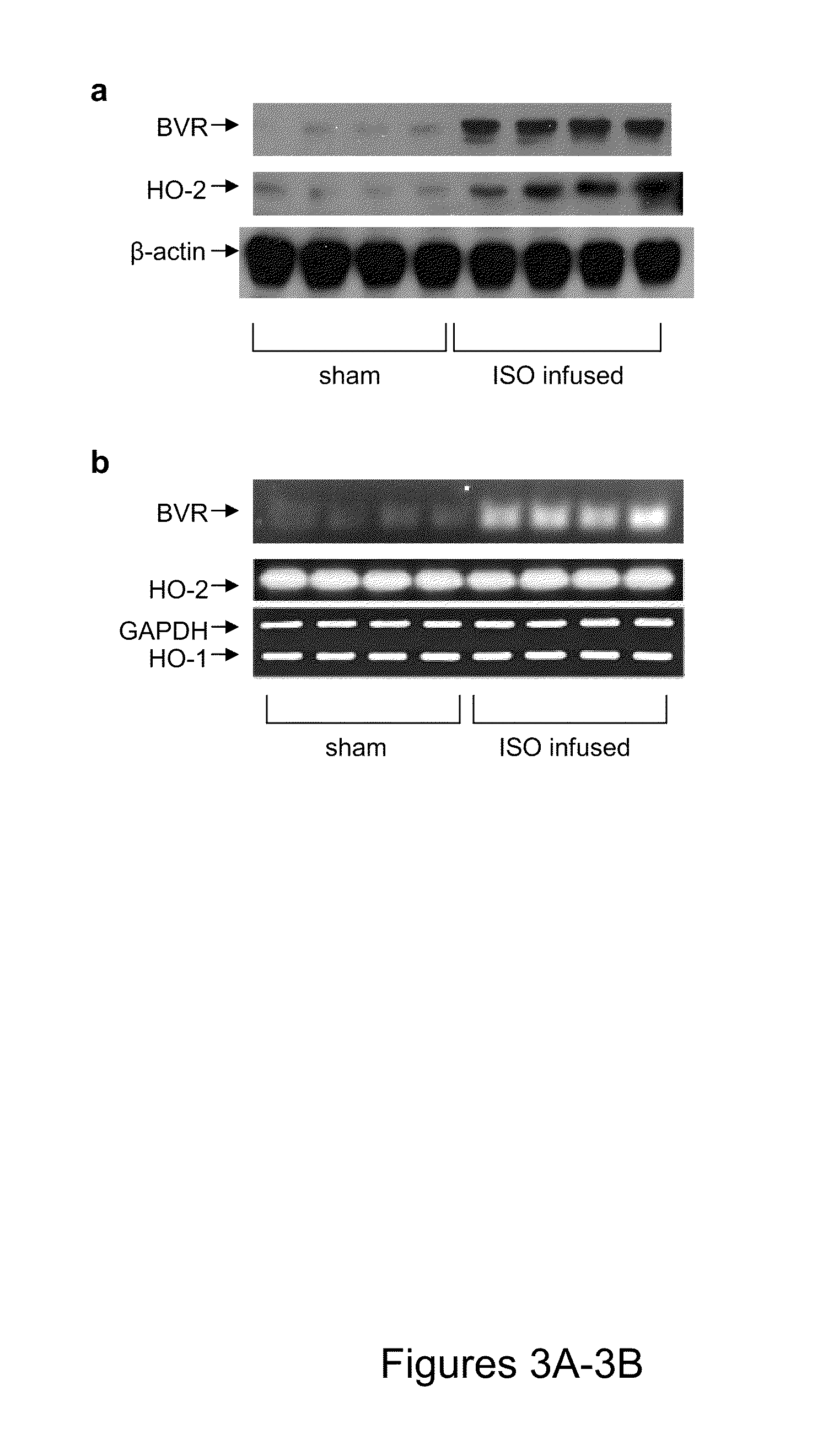Use of biliverdin reductase (BVR) and bvr peptide fragments to treat coronary disorders
a technology of biliverdin reductase and peptide fragment, which is applied in the direction of cardiovascular disorders, drug compositions, peptide/protein ingredients, etc., to achieve the effects of regulating ho-2 stabilization and expression, inhibiting the progression of cardiac cell death, and facilitating ho-2-mediated cardiac cell protection
- Summary
- Abstract
- Description
- Claims
- Application Information
AI Technical Summary
Benefits of technology
Problems solved by technology
Method used
Image
Examples
example 1
Isoproterenol Increases BVR and HO-2 Protein Expression In Vitro
[0099]Isolated rat neonatal cardiomyocytes were initially treated with 10 μM isoproterenol. BVR protein expression was elevated within 8 hours of initiating the treatment, while the HO-2 protein level began to increase by 12 hours, reaching a plateau by 24 h (FIG. 2A). The increased levels of both proteins remained stable for up to 96 hours of treatment with isoproterenol.
[0100]The question of whether the increased synthesis of each protein required elevated levels of BVR and HO-2 mRNA was investigated by RT-PCR. Interestingly, it was found that the level of BVR mRNA increased in advance of the increased protein synthesis, but the HO-2 mRNA content remained unchanged during isoproterenol stimulation (FIG. 2B). The BVR mRNA content of the cells remained high for up to four days—even prolonged exposure of the cells to isoproterenol did not alter the levels of HO-2 mRNA. Other than a transient increase in the level of HO-1...
example 2
Isoproterenol Increases BVR and HO-2 Expression in the Rat Heart During Isoproterenol Infusion
[0102]It might be argued that the above data arose as an artifact of cell culture. To test whether those findings also apply in vivo, four rats were continuously infused with isoproterenol for four days, after which cardiac tissue was harvested for examination of BVR and HO-2 expression. Again, the HO-2 and BVR protein expressions were up-regulated compared to those seen in sham treated animals (FIG. 3A). These data are consistent with the in vitro observations. Also, as expected from in vitro observations, there was no change in the level of HO-2 mRNA during infusion with isoproterenol (FIG. 3B), whereas the BVR mRNA was increased. Again, there was no apparent change in the level of HO-1 mRNA in the tissue.
example 3
Induction of BVR and HO-2 is Mediated by the cAMP-PKA Pathway
[0103]Because the effects of isoproterenol occur via the cAMP-PKA pathway, the effect of inhibiting PKA was tested on the induction of BVR and HO-2 proteins in cultured cardiomyocytes. Adenovirus-mediated expression of the 75-amino acid endogenous PKA inhibitor, PKI, blocked the isoproterenol-induced up-regulation of both BVR and HO-2 (FIG. 4). Thus, the increased levels of both BVR and HO-2 protein after isoproterenol treatment are dependent on the activity of the cAMP-PKA pathway. Because both proteins are regulated by the same pathway, and this pathway first results in induction of BVR, with HO-2 induction being dependent on BVR the following Examples demonstration how elevated BVR cause enhanced HO-2 expression.
PUM
| Property | Measurement | Unit |
|---|---|---|
| Composition | aaaaa | aaaaa |
| Cell death | aaaaa | aaaaa |
| Inhibition | aaaaa | aaaaa |
Abstract
Description
Claims
Application Information
 Login to View More
Login to View More - R&D
- Intellectual Property
- Life Sciences
- Materials
- Tech Scout
- Unparalleled Data Quality
- Higher Quality Content
- 60% Fewer Hallucinations
Browse by: Latest US Patents, China's latest patents, Technical Efficacy Thesaurus, Application Domain, Technology Topic, Popular Technical Reports.
© 2025 PatSnap. All rights reserved.Legal|Privacy policy|Modern Slavery Act Transparency Statement|Sitemap|About US| Contact US: help@patsnap.com



